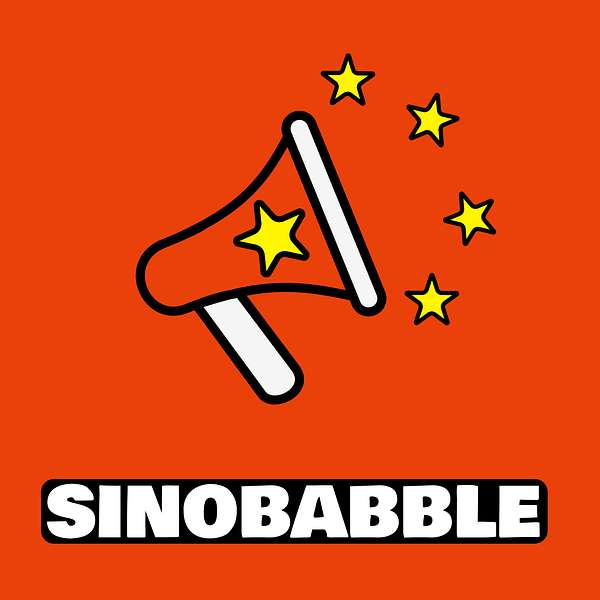
Sinobabble
A relaxing, educational podcast covering China's modern history, current events, and academic analyses of China's politics, society, and culture in a variety of mini-series. Starting with the history of the 20th century, this podcast aims to explore all facets of the history of China, from the major events to the smallest local changes, to give you a full picture of the development of one of the world's most powerful nations. As the series develops, we will discuss Chinese art, religion, politics, culture, and economics, bringing the country's past to life. If you're more interested in modern China, stay tuned for the modern China series where we talk about how the CCP exercises control, makes people disappear, and encourages loyalty. We also get on the ground and talk to the people of Hong Kong about their recent experiences with the protests in the territory in 2019.
Sinobabble
The silliest debate in Chinese academic history (Boodberg v Creel)
What is the origin of the Chinese writing system? Where did Chinese characters come from, and how did they evolve over time? Are they pictographs? Ideogographs? Logographs? Phonographs? Or all of the above? This is the nature of one of the most famous debates in Sinology, which took place in the 1930s between historian Herrlee Creel and linguist Peter Boodberg. The debate not only reveals the complexity of including many diverse fields under the single umbrella of 'Chinese studies', but also reveals a deeper controversy about the way Chinese history, language, and thought is understood and interpreted in the Western canon.
Chapters
(00:00) Introduction
(04:10) Sinology, Chinese characters, and the Shang Oracle Bones
(08:00) Origins of the debate
(10:33) Creel's argument
(26:56) Boodberg's response
(40:55) Back and forth
(48:03) The end of the debate
(50:07) Sinology and Sinologism
Characters mentioned:
牛(niu, 'cow') was originally drawn like the top of a stick man with a U shape for horns; similarly sheep 羊(yang) was a stick figure with 'M' shaped horns
见 (complex character 見), was written on oracle bones as a man with an eye for a head, and evolved over time so the eye was turned on its side and the man's body simplified into just legs
鲜 (xian, 'fresh') Creel argues is a compound of fish 鱼 and sheep 羊, but Boodberg argues 羊(yang) was originally the phonetic element of the word
里 (li, 'village'); 俚(li, 'rustic', 'vulgar') has the radical for man in front, changing the meaning ffrom noun to adjective
集(ji, 'to gather') according to Creel was originally 3 birds gathered on top of a tree, but over time evolved to be just one bird on a tree for simplicity (隹 zhuī short-tailed bird + 木 mù tree)
東(dong, 'east') is interpreted by Creel to be the sun behind a tree, 杲(gao, 'bright') is the sun above the tree, and 杳(yao, 'dim, dusky') is the sun below the treeline
圕 (tushuguan, 'library'), one of the few standardised polysyllabic Chinese characters used in Mandarin, but no longer in use. sometimes pronounced 'tuan' as a contraction
自(zi, 'self') could originally have meant 'self' or 'nose', and been read alternatively 'zi' or 'bi'. Over time, the signifier was added to the word for nose to make it 鼻,(bi, 'nose'), the bottom part 畀(bi, 'confer', 'give') being the phonetic determinate
名 (ming, 'name'), in Boodberg's argument made up of 夕(xi 'dark, night') and 口(kou, 'mouth, to utter'). However, he argues that 夕(xi) should be read as ming when used to mean 'dark', as it's the same meaning as 冥 (ming, 'dark, dim').
他,她,它 meaning he, she and it are all pronounced 'ta' (there is also 祂, meaning 'He' like a god, also pronounced 'ta')
夜(ye,'night'), which has been interpreted to be a man (人) with the moon (夕) tucked under his arm under a roof, is dismissed by Boodberg as a ridiculous interpretation
Sign up for Buzzsprout to launch your podcasting journey: https://www.buzzsprout.com/?referrer_id=162442
Subscribe to the Sinobabble Newsletter: https://sinobabble.substack.com/
Support Sinobabble on Buy me a Coffee: https://www.buymeacoffee.com/Sinobabblepod